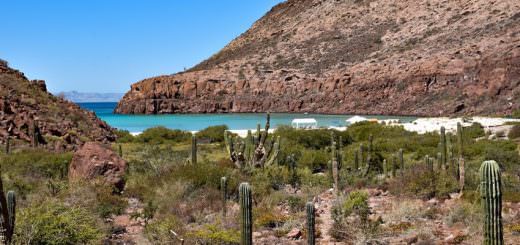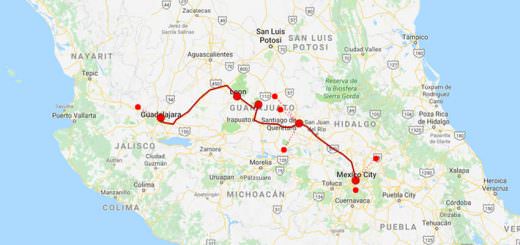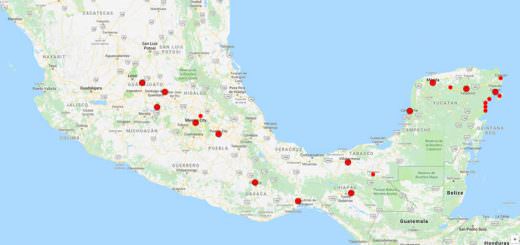
Tepatitlán
Tepatitlán de Morelos, commonly referred to as Tepatitlán is a city in the state of Jalisco. The city is located in the area known as Los Altos de Jalisco, about 70 km east of Guadalajara. It is part of the macroregion of the Bajío.
Tepatitlán is known for its stunning natural surroundings and pleasant climate. Tepatitlán offers a delightful experience for travelers. A mix of urban development and natural beauty characterizes the city’s environment.
Tepatitlán is known for its well-maintained parks, tree-lined streets, and charming central plaza. The local culture is deeply rooted in traditions, and you’ll often find cultural events, festivals, and a warm, welcoming atmosphere.
The region is a citrus paradise, the Rio Verde Canyon with a tropical climate at the bottom, about 500 m deep, contains deposits of hot springs and spectacular scenery, half-developed by some resorts.
Climate & Weather
Tepatitlán has a humid subtropical climate that is close to a tropical savanna.
Daytime temperatures in the summer range from 24°C to 29°C, while winters daytime temperatures between 10°C to 15°C. Tepatitlán’s climate is characterized by the occasional rainfall during the summer months.
This climate is generally pleasant and makes it a great year-round destination.
The best time to visit
The best time to visit Tepatitlán depends on your preferences.
If you enjoy milder weather and fewer crowds, consider visiting during the spring (March to May) and fall (September to November), when temperatures are comfortable for exploring the region and its surroundings.
If you want to experience the city’s lively festivals, plan your trip during key events.
One of the most popular festivals in Tepatitlán is the Feria Nacional de San Marcos, typically held in April and May. This fair celebrates the city’s patron saint and features a variety of cultural, and entertainment events.
Origin of the name
Tepatitlán means “Hard Stone Place”, in the Nahuatl language.
However recent artifactual discoveries indicate that the name may actually have a different meaning than the one that is conventionally accepted. The matter has yet to be settled conclusively by scholars and officials.
The nickname of the city is “Tepa”.
History
The area was primitively inhabited by the Otomi people, a hunter-gatherer society. After that, the Tecuexe arrived in the area, also known as the tecuanni, which means cruel or sanguinary, as a reference to their fighting nature.
The city had various locations across time. The first is known as Pueblo Viejo in the Raumalelí hill. Afterward, they moved to the Cerrito de la Cruz, which today is home to a famous hilltop chapel, and finally, under the leadership of Mapelo, to its current location.
In the year 1530, the Spanish captain Pedro Almíndez Chirinos arrived in the area, sent by Nuño Beltrán de Guzmán to explore the region up to the state of Zacatecas, and so he arrived in Zapotlán del Rey, Acatic, Zapotlán el Grande, and Tepatitlán, ending up in the Cerro Gordo.
Around the same time Almíndez Chirinos arrived, a group of Franciscan Friars Christened the area, built the first church by the name of San Francisco de Asís, and evangelized the natives. Because of this settlement, the village took the name of San Francisco de Tecpatitlán (The ancient way of spelling the city’s name).
During the Mexican War of Independence, the village’s population, composed and dominated by some Creoles and Mestizos, showed itself to be indecisive about joining the war effort, but after Independence Father Miguel Hidalgo y Costilla entered triumphantly in Guadalajara, the indifference turned into enthusiasm for the cause.
One Tepatitlense, Col. Albino Barajas took part as an insurgent in the Battle of Calderón Bridge.
By decree of 27 March 1824, Tepatitlán turned into one of the 26 departments into which the state of Jalisco was divided and was conceded the title of villa.
From that same year, it became part of the Third Canton, seated in La Barca, the situation in which it remained until the early 20th Century when the state’s territorial division in cantons disappeared.
During the regime of the Second Mexican Empire under Maximilian I of Mexico, according to the provincial statute of 10 April 1862, Tepatitlán, together with most other villages in the Los Altos region, became part of the Department of Aguascalientes.
By decree number 41, published 20 September 1883, the town has conceded the title of the city, with the denomination Tepatitlán de Morelos in honor of the Revolutionary insurgent José María Morelos y Pavón.
1927–1929: Tepatitlán was a witness and actor in the battles between Cristeros and Federals during the Cristero War, within its urban perimeter, the bloodiest battle of the whole war was fought, and on that sole day, the federal army lost more than 3,000 troops.
The City
The fleur-de-lys (three-petal lily or iris) can be seen in a number of public spaces and buildings, including the Santuario de Guadalupe and the internationally famous Santuario del Señor de la Misericordia, which houses an oak-carved crucifix that, according to the legend, was found by a poor farmer on the Cerro Gordo in 1835.
Its most distinctive feature is the Baroque-style parish church in the center of the city dedicated to Saint Francis of Assisi, pictured below, although it has many other attractive locations.
Plaza de Armas
The kiosk that sits on the Plaza de Armas is of gracious and elegant design and ornamented with iron, it was built in France and brought to the city.
Palacio Municipal
The city hall (Palacio Municipal) is one of the most distinctive features in the city, built in the neoclassic-baroque style.
The Temple of San Antonio
Although it has a simple architectural design, it became famous when during the Cristero War (1926–1929), the federals and the religious would crossfire from the tower of the temple, to the towers of the San Francisco Church.
Parroquia de San Francisco de Asís
Created with one neoclassic style, with baroque reminiscence, this grand temple was built from 1742–1775. It is topped with two slender neoclassical towers, 63 m in height each, and three airy domes.
The façade is dominated by a curious architectural element: a semi-hexagonal pórtico, which was added as a support for the heavy and slender towers which, as Pozos was told, would collapse if he did not add support.
On the inside, it is decorated by the main altar, constructed entirely of white marble from Carrara, and the sculptures of the four Evangelists, sculpted by the Italian architect Augusto C. Volpi, whose depiction of St. John is detailed with such exquisite beauty, it doesn’t stand any less than Michelangelo’s David.
Another great example of local craftsmanship is the sculptural group of La Piedad, carved in oak wood by Agustín Espinoza, which has been compared, kept in due proportion, to Michelangelo’s Pietà.
One of the most remarkable facts about this church is its clock, located on the south tower, facing the Plaza de Armas, which has been giving time to the residents for 141 years non-stop.
The Santuario del Señor de la Misericordia
The Santuario del Señor de la Misericordia, the temple of San Antonio, with a great history during the second Cristero War, the building that houses the City Museum, and various constructions of the 19th century, are many other attractive sites in the city which are worth a visit.
Presidencia Municipal
It was in 1727, that the older “town hall” was expanded with the terrain donated by Mrs. Elena de la Rua, and after it started functioning as city hall, it was completely remodeled from 1905–1908 under the direction of Don Francisco de Paula Palomar, who designed it with a near-neoclassic style, mixed with French Baroque in its decor; and in 1954, it was added to the design its current aspect, so jolly, and unique in the western Mexico.
Of neoclassic style, the City Hall is regarded as one of the most beautiful in the region.
It is a two-story building that holds on the walls of the staircase, a mural of the history of the city, measuring 80m² Its three façades form a design of undeniable beauty which gives it its lordship and poise for City Hall.
Señor de la Misericordia Patronage
Every year from the 25 to the 30 April, the city hosts the Feria Tepabril which celebrates the Señor de la Misericordia.
The more catholicism was taking footholds in Mexico, the more visions and divine signs had the brand-new Christians.
According to one more popular legend, in 1835, Don Pedro Medina, a poor, old farmer, saw from the outside of his home in the countryside an intense light, coming from the Cerro Gordo.
For the first few days, he thought it must have been some kind of coal or wood furnace. But he kept seeing the light for a few more days, so he decided he would climb the mountain up to the place to see what was going on.
When he finally got to the place where he had seen the light, he found nothing, until he turned his head towards an oak tree, and found in it, an image slightly reminiscent of a crucifix.
He was so amazed, that he decided he wanted everyone to see his “Father” as he called it, and so, decided to chop the tree down, and take it into the city.
Pedro Medina was a poor man, so to get it from up on the mountain, to his ranch, he had to ask his neighbor for a couple of oxen to bring it down.
However, when they cut the image down, and attached it to the oxen, it would not move, so Medina told his “compadre” to turn the image face up, and as soon as they did this, the oxen moved with immense ease.
In town, the adoration to the holy image grew so big, that Don Pantaleon Leal offered Don Pedro Medina his home as a shrine to the image.
After a few years, in 1831, the Shrine erected in his honor stands, and every year, the city fills with over 2 million visitors to adore him and ask him for favors.
His feast is celebrated on 30 April, the day on which he was brought into his current shrine, and grand festivities are held, for he is the patron of the city.
Let us know if this article was useful for you





















